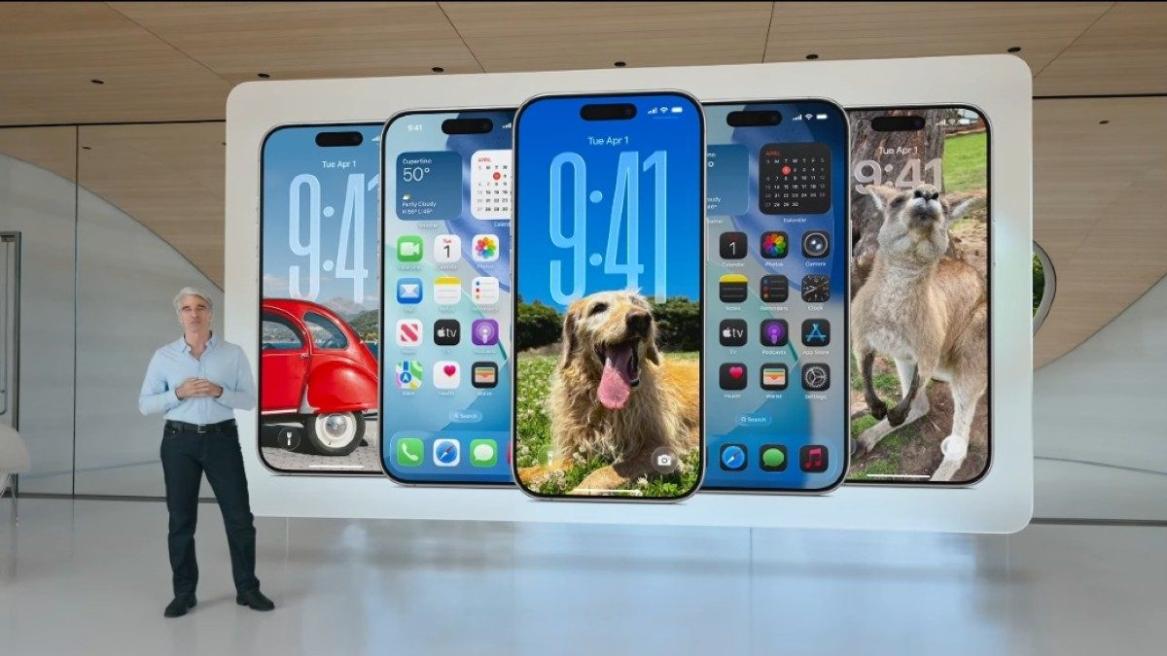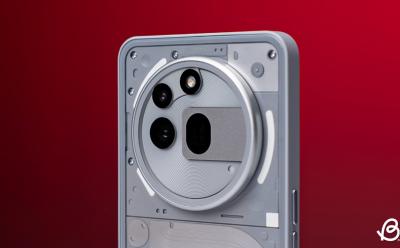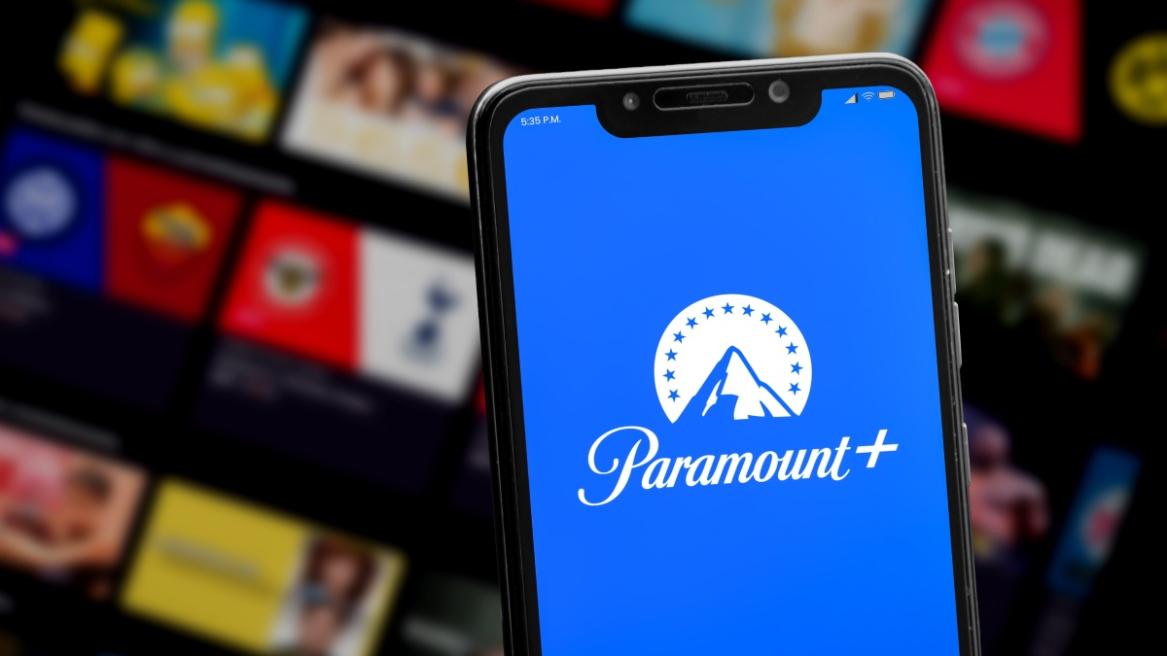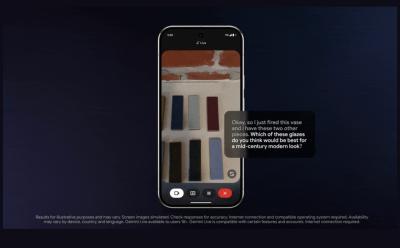Apple’s latest move in the iOS 26 cycle is delivering a substantial upgrade through the fourth developer beta, reviving the Glass aesthetic under the Liquid Glass branding after high demand from users and developers alike. This beta emphasizes polish and cohesion across the iPhone experience, introducing a refined visual language, subtle yet meaningful UI shifts, and a set of feature refinements that address early feedback while laying groundwork for performance and stability improvements ahead of a broader public rollout. Below is a comprehensive, sectioned breakdown of everything new and noteworthy in iOS 26 Developer Beta 4, with detailed context, implications, and the potential impact on everyday use.
In-Depth Overview: The Context and Significance of iOS 26 Developer Beta 4
The iOS 26 development cycle has been characterized by a balancing act between dramatic visual ambitions and practical refinements that ensure reliability on a wide array of devices. With Beta 3, Apple signaled a departure from the bold glassy motif, prompting a mixed reception within the community. Some users welcomed a leaner interface that prioritized legibility and performance, while others missed the distinctive Glass aesthetic that had become a talking point during earlier previews. Beta 4 now reintroduces Liquid Glass in a controlled, polished form, signaling that Apple is listening to feedback and adjusting the design language to fit both aesthetics and usability.
This latest beta reaffirms that the Glass motif is not merely cosmetic but an integral part of how users perceive depth, motion, and hierarchy within iOS 26. The effect is not static; elements in the UI respond to interactions in the background, morph subtly, and maintain a sense of coherence with the system wallpaper and content behind them. This interaction is reminiscent of the visuals demonstrated during Apple’s WWDC presentations, where layered translucency and dynamic motion were highlighted as core principles of the operating system’s design philosophy. In Beta 4, the experience feels more fluid, with smoother transitions and more natural motion than in prior builds, which is essential for user satisfaction during daily use.
One of the practical outcomes of this refinement is improved readability against glassy backgrounds. In particular, the lock screen benefits from a darker tint as you scroll through notifications, which increases contrast and reduces visual noise. This change is a clear embodiment of the ongoing attention to accessibility and readability that Apple has emphasized across its software releases. The net effect is a more comfortable experience for prolonged device use, especially in varying lighting conditions where glassy backgrounds can sometimes hamper legibility. As with any design refresh, these adjustments aim to preserve the distinctive Liquid Glass identity while ensuring that users can interact with the UI without friction or distraction.
Additionally, Beta 4 introduces a new dynamic wallpaper category under iOS 26’s wallpaper options. This dynamic set—previously identified simply under the “iOS” label—offers a refreshed collection that complements the Liquid Glass aesthetic. The rebranding and integration of a dynamic wallpaper category underscore Apple’s intent to provide users with cohesive, evolving visuals that pair well with the updated UI. The wallpaper experience is not merely decorative; it’s designed to harmonize with application chrome, notification banners, and the translucency effects that define the Glass motif. For developers and power users, this also presents opportunities to explore how dynamic wallpapers influence performance considerations, such as background rendering, memory usage, and battery impact in sustained usage scenarios.
In terms of overall user onboarding and clarity, Beta 4 includes a refreshed informational splash screen that appears to be part of a broader onboarding strategy ahead of the public beta. This splash screen communicates the new layout and visual language to users who are approaching the beta from a broader audience—not just developers. The splash screen’s presence indicates Apple’s intent to make the transition smoother for testers who may not be familiar with the nuances introduced in iOS 26. It also provides a gentle primer for those who will soon interact with the public beta, reducing potential confusion around newly introduced visuals and interaction patterns.
Taken together, these changes in Beta 4 reflect a deliberate strategy: preserve the visual identity and depth that Liquid Glass offers while enhancing performance, readability, and accessibility. The updates imply that Apple aims to deliver not only an aesthetically striking system but also a reliable, user-friendly one that performs well across devices and across everyday tasks—from unlocking the device to navigating Control Center, notification shade, and app interfaces. For developers, the beta provides a clearer baseline for testing with more fluid motion and a more consistent look across system surfaces, which is crucial for ensuring third-party apps render correctly within the updated design ecosystem.
Liquid Glass: Visual Depth, Interactivity, and Performance
A central pillar of Beta 4’s narrative is the revival and refinement of the Liquid Glass experience. The Glass effect, which creates a translucent, depth-rich interface, has moved from a bold experimental feature into a more integrated and polished aspect of the iOS 26 ecosystem. In practice, the revival is not a mere cosmetic enhancement; it influences how users perceive depth, hierarchy, and focus within the user interface. The effect now appears more consistently across multiple surfaces, including tab bars, menu items, the Control Center, and the notification shade. Each of these elements benefits from the Glass treatment, which contributes to a cohesive system-wide aesthetic.
Key to the Liquid Glass experience is how the background interacts with foreground elements. In Beta 4, the background content morphs and responds to user actions in a way that feels natural and anticipatory. The morphing is designed to convey a sense of continuity—when you switch between apps, pull down the Notification Center, or interact with Control Center tiles, the glassy surfaces respond with subtle shifts that mirror the content behind them. This approach helps establish a consistent visual language that reduces cognitive load by enabling users to quickly infer where UI elements are and how they relate to the background content.
From a readability perspective, Liquidity Glass has shown notable improvements. In particular, the lock screen’s readability benefits from a darker tint introduced as you scroll through notifications. This adjustment is especially important in dynamic, high-contrast scenes where translucent layers can otherwise obscure text. The darker overlay reduces glare and ensures that notification text remains legible without sacrificing the sense of depth. Readers may notice that the balance between translucency and contrast has been tuned to optimize for both aesthetic appeal and practicality.
Performance improvements are another essential component of Beta 4’s Liquid Glass polish. Developers and enthusiasts alike have observed smoother transitions and fewer jarring moments when moving through apps, menus, and system surfaces. The fluidity of motion contributes to a more responsive feel overall, which is a critical factor for user satisfaction on devices that support iOS 26. While the exact under-the-hood optimizations are not always disclosed in beta notes, the overall impression is that Apple has fine-tuned frame budgets, compositing, and prioritization of rendering tasks to deliver a more stable glassy experience under typical workloads.
From a developer perspective, the Glass ethos affects how third-party apps integrate with iOS 26. Subtle translucency can reveal content behind the UI, but it also requires careful design of app interfaces to ensure legibility and contrast are preserved. For instance, when third-party apps render views against translucent surfaces, text and icons must maintain readability across a range of backgrounds and lighting conditions. Beta 4 offers a clearer baseline for evaluating how apps adapt to Liquid Glass, including how color choices, typography, and control placements perform inside translucent contexts. This is particularly relevant for developers testing navigation bars, toolbars, and sheet-style components that sit above dynamic backgrounds.
The practical takeaway for end users is straightforward: expect a more immersive yet practical interface. The glassy surfaces contribute to a sense of depth and sophistication, while the improvements to readability and motion smoothness reduce distraction and fatigue. Users who prioritize visuals and aesthetics, as well as those who value consistent behavior across system surfaces, should find Beta 4’s Liquid Glass implementation notably more satisfying than its predecessors. For those with accessibility concerns, the updated contrasts and tint levels should translate into better usability in a wide range of environments, from dim rooms to bright outdoor settings.
New Dynamic Wallpaper: A Fresh Visual Foundation for iOS 26
In addition to UI refinements, Beta 4 expands the visual frontier with a new dynamic wallpaper option under the iOS 26 wallpaper category. This addition complements the Liquid Glass experience by providing a living, evolving backdrop that interacts with the translucent layers of the interface. The former wallpaper category, which simply logged as “iOS,” has been updated to reflect a broader collection that aligns with the updated aesthetic. The dynamic wallpaper is designed to respond in nuanced ways to user interactions and device states, including parallax movement as the device is tilted or moved and subtle color shifts that harmonize with the Glass glow.
The introduction of a dynamic wallpaper category has several practical and perceptual effects. First, it gives users a fresh canvas on which to showcase the Liquid Glass interface, enhancing the sense of depth and immersion without overpowering content in the foreground. Second, it provides an additional lever for personalization, enabling users to tailor their device to their mood or usage scenario. The choice of wallpaper can influence perceived contrast, vibrancy, and even perceived system speed, depending on how the wallpaper interacts with the translucent layers. Third, the updated wallpaper assortment signals to developers and power users that iOS 26 places a premium on cohesive visuals, with wallpaper design considered as part of the overall user experience rather than a stand-alone aesthetic element.
The wallpaper set’s design language is intentionally aligned with the broader Liquid Glass motif: soft edges, gradient shading, and color schemes that complement glass translucency. The dynamic behavior of these wallpapers is calibrated to complement, rather than compete with, foreground content. In practical terms, this means wallpaper animations are subtle enough to avoid distracting from notifications, app content, or active tasks, while still offering a sense of motion and vitality that keeps the home screen feeling modern and alive.
For developers, dynamic wallpapers present opportunities to study performance implications, particularly around GPU usage, memory bandwidth, and energy efficiency. While the dynamic wallpaper capability is designed to be optimized for everyday use, testers should watch for any unusual battery drain or frame drops when combined with other heavy UI effects. Apple’s emphasis on performance remains evident, and Beta 4’s wallpaper enhancements are a meaningful part of the broader strategy to deliver a visually engaging yet efficient iOS experience.
Camera App: Subtle Icon Refinements and Onboarding Enhancements
Among the smaller but notable changes in Beta 4 is a subtle refinement to the Camera app icon. While the change is minor—a trimmed bezel around the lens area—it contributes to a more balanced and less cluttered iconography that sits cleanly within the Liquid Glass ecosystem. Even minor icon adjustments can affect perceived sharpness and consistency across the home screen and app library, particularly on devices with higher display densities where every pixel matters for visual cohesion.
In addition to the icon update, Beta 4 introduces a new informational splash screen designed to acquaint users with the updated layout and features. This onboarding element appears to be part of Apple’s preparation for a wider public beta by offering a guided tour of the changes rather than relying on trial-and-error exploration. The splash screen is intentionally informative without being overwhelming, highlighting the new visuals, the enhanced readability in glassy surfaces, and the refreshed control surfaces users will encounter. This onboarding approach is aligned with a broader strategy to ease adoption for non-developer testers who will soon be evaluating iOS 26 in the public beta.
From a user experience standpoint, these changes are cumulative. The Camera app icon tweak, the new splash screen, and the general polish across system surfaces signal a deliberate approach to interface consistency and clarity. Users who frequently switch between Photography features and other apps will notice the streamlined iconography and more coherent visual language, which helps reduce cognitive load when navigating between the camera, gallery, and other media-related surfaces. In addition, the onboarding content can help users understand how Liquid Glass interacts with camera controls, exposure settings, and fast-access toggles, minimizing confusion as new UI patterns become part of daily usage.
Notification Settings and News: Reintroducing Summaries and Apple Intelligence
iOS 26 Beta 4 brings back a feature that many users and media stakeholders had been following closely: notification summaries for news and updates. The capability, which had been temporarily disabled due to concerns about inaccuracies, returns in a refined form that aims to deliver concise summaries of trending stories and important updates. The reintroduction signals Apple’s intent to balance automated content curation with reliability, acknowledging the feedback and backlash that accompanied the initial rollout. The revival of notification summaries is particularly relevant for users who rely on quick, digestible news bites within the notification center and lock screen, enabling a more efficient means of staying informed without opening individual apps.
The decision to resume notification summaries was not taken lightly. Apple Intelligence, the suite of machine learning features that help curate and present content, had been disabled following reports of inaccuracies and significant pushback from media partners and the broader public. Beta 4’s approach aims to address those concerns by applying stricter filtering, more transparent safeguards, and improved validation of content before it’s surfaced to users. The split between a more prolific AI-driven experience and the risk of misinformation underscores an ongoing tension in modern operating systems: delivering timely information while maintaining accuracy and trust.
For photographers, journalists, and news enthusiasts, the resuscitated notification summaries offer a pragmatic path to quickly catch up on major developments without sacrificing attention to detail. The improved accuracy under Beta 4 relies on updated data sources, calibration of content relevance, and a more robust handling of edge cases where headlines might be sensational or misrepresentative. Apple’s stance appears to be that delivery speed must be paired with credible, verifiable content, especially in a landscape where miscommunication can multiply rapidly on mobile platforms.
This is not just a backend story; users may notice adjustments in how stories are prioritized and summarized. The tone, selection, and length of summaries are optimized to be concise yet informative, with warnings and disclaimers where appropriate to avoid misinterpretation. The return of these summaries aligns with broader iOS 26 goals of empowering users with faster, smarter, and safer information access—an objective that dovetails with other accessibility and user-safety improvements.
Additionally, the News and Updates domain within iOS 26 Beta 4 reflects a broader refinement of Apple Intelligence features. By rebalancing algorithmic curation and implementing more robust guardrails, the platform aims to deliver a better-quality information experience without overstepping user expectations or introducing noticeable latency. While the exact tuning parameters are not disclosed, the behavioral signals suggest that Apple is investing in both the depth of coverage and the reliability of the content presented through smart summaries.
Phone App Updates: Managing Unknown Callers with Greater Control
Another notable enhancement in Beta 4 centers on the Phone app’s handling of calls from unknown numbers. The update introduces a more granular set of controls for users who want to manage incoming calls from numbers not stored in their contacts. Specifically, users can now choose among three primary behaviors: never silence unknown calls, require a reason for calling, or silence all calls. This tiered approach offers a flexible balance between staying reachable and avoiding unwanted interruptions.
For many users, the “never silence unknown calls” option could be favored by those who rely on business contacts or critical communications from unfamiliar numbers. Conversely, the “silence all calls” option provides a strong shield against unsolicited calls, which may be particularly appealing to users who face persistent telemarketing or scams. The “ask reason for calling” setting sits between these extremes, enabling a live decision at the moment of contact, which adds a layer of discernment while preserving the possibility of legitimate outreach. In practice, this setting can be especially valuable for professionals who juggle multiple lines or devices and need to avoid missing important calls while minimizing disruption.
The broader impact of these changes extends beyond the Phone app. The way iOS 26 handles unknown calls intersects with how system-level calls, VoIP, and third-party applications present caller information. The new controls are designed to be intuitive and easy to adjust, with explanations accessible through the settings interface. This ensures that even casual users can understand the implications and customize their experience without requiring extensive technical knowledge. It also aligns with a growing industry emphasis on user agency and privacy, giving individuals clearer options to shape communications in a way that matches their personal routines and boundaries.
From a design perspective, the updated settings reflect the broader UI refinements in Beta 4. The controls are presented in a straightforward manner, with clear naming and predictable behavior that minimizes ambiguity. The goal is to empower users to make rapid, confident decisions in real time, whether they are at work, in a meeting, or in a noisy environment. By integrating these options into the Phone app, Apple reinforces a consistent approach to privacy and call management across the ecosystem, ensuring that similar controls exist in messaging, notifications, and other communication-focused surfaces.
Performance and Stability: What Beta 4 Signals About the Public Beta
With the imminent transition from developer beta to public beta, Beta 4 appears to be oriented toward improving performance and stability rather than deploying sweeping new features. Several core indicators suggest that the groundwork for a broader public release is being laid with diligence and care. The polish across Liquid Glass, dynamic wallpaper, and the refreshed onboarding flow points to a desire for a smooth, cohesive user experience that can withstand the scrutiny of a larger tester base. The focus on readability, responsiveness, and consistent visual language underscores Apple’s intent to minimize friction when users interact with iOS 26 in day-to-day tasks.
From a performance standpoint, the beta indicates a stabilization push rather than a major feature sprint. The refined motion, improved text legibility on glassy surfaces, and the controlled reintroduction of notification summaries are all consistent with a strategy that prioritizes reliability and predictable behavior. For developers, this environment presents a more stable platform for testing third-party apps, ensuring that the Glass UI and dynamic wallpaper do not introduce unexpected rendering issues or performance regressions. The net effect is a more trustworthy beta experience that can inform feedback and bug reports ahead of the public release.
Users anticipating the public beta can reasonably expect further refinements focused on battery life, system responsiveness, and compatibility across a range of devices. The emphasis on performance suggests that Apple is addressing known pain points that could affect adoption, such as frame drops, jank, or excessive background activity associated with dynamic visuals. While there may still be some issues typical of beta software, Beta 4’s trajectory points toward a more stable public experience, with the company likely to solicit and incorporate user feedback for additional polish in subsequent updates.
For enthusiasts who track iOS development milestones, Beta 4’s emphasis on polish over new feature expansion is a telling signal. It indicates that while Apple continues to push forward with its design language and UX experiments, the company recognizes the importance of a dependable baseline before broadening exposure in a public beta. The result is a more measured approach to expansion: users gain access to a refined set of changes, but not at the expense of performance or reliability. This measured cadence is consistent with Apple’s historical strategy of bone fide testing before wide-scale public adoption, reducing the risk of major issues upon launch and ensuring a positive reception from early adopters and the general audience alike.
What It Means for End Users: Practical Insights and Real-World Impact
For everyday users, the fourth developer beta of iOS 26 translates into tangible improvements that can influence daily device interactions. The reintroduction of Liquid Glass provides a visual depth that many will find appealing, especially when it remains balanced with readability and performance. The improved lock-screen readability, driven by a darker tint during notification scrolling, directly enhances the user experience by making important information more legible without sacrificing the aesthetic appeal of translucency.
The new dynamic wallpaper option adds a layer of personalization that aligns with the refreshed UI language. Users can customize their home screens with living backgrounds that complement the glassy interface and overall color palette. This feature is particularly appealing to those who enjoy refining the look and feel of their devices, as it offers a visually cohesive environment that reduces distraction while maintaining a modern, premium appearance.
The onboarding splash screen and camera icon refinements, while subtle, contribute to a more polished first impression for users encountering iOS 26 in Beta 4. These elements aid in navigation and recognition, ensuring that even minor UI updates feel deliberate and integrated rather than incidental. Overall, end users can expect a more immersive and refined iOS experience, with improvements that enhance both aesthetics and usability.
The reintroduction of notification summaries for news and updates offers a functional enhancement for information consumption. While Apple Intelligence tweaks have sought to maintain accuracy, the overall approach remains focused on delivering timely content with greater reliability. Users who rely on quick briefs will likely appreciate the capability to receive concise, curated news items without opening multiple apps. However, as with any AI-assisted feature, users should remain mindful of the potential for inaccuracies and verify critical information from primary sources when necessary.
The enhanced Phone app controls for unknown-number calls provide additional choices for personal privacy and call management. Depending on their lifestyle and professional needs, users can tailor their incoming-call behavior to minimize interruptions while ensuring access to legitimate contacts. This flexibility supports a more personalized iPhone experience and reflects a broader trend toward user-centric privacy controls across iOS.
Preparation for the Public Beta: What to Expect Next
As Apple edges toward the public beta for iOS 26, Beta 4’s focus on stability and performance suggests that the forthcoming release will aim to deliver a dependable, widely compatible version for a broad spectrum of devices. Expect further refinements to the Liquid Glass surfaces, including any micro-animations and shading nuances that refine readability and reduce visual noise. The dynamic wallpaper ecosystem will likely receive continued tuning to strike an ideal balance between aesthetic flair and resource consumption, ensuring that background effects do not compromise battery life or system responsiveness.
In terms of features, the public beta is likely to emphasize polish, with fewer radical changes and more consistent behavior across apps and system surfaces. Users can anticipate improved application compatibility, smoother transitions, and more predictable performance in common tasks such as messaging, media playback, photography, and multitasking. Apple’s ongoing objective remains clear: to deliver a refined, cohesive experience that resonates with users who value both design and practicality. As always, beta testers should be prepared to provide detailed feedback that helps identify edge cases, performance regressions, and accessibility concerns that can guide final optimizations before the official public release.
Developers should continue to test their apps against the evolving UI guidelines, ensuring that translucent surfaces and dynamic backgrounds render correctly under various conditions. The documentation that accompanies Beta 4 will likely evolve, and developers should monitor for any shifts in recommended practices for UI contrast, typography, and layout to maintain compatibility and ensure a consistent user experience. Power users and enthusiasts should also explore battery and thermal behavior under different usage scenarios, particularly with background visual effects enabled, to gain a deeper understanding of the impact on long-term device performance.
Community Feedback, Expectations, and the Road Ahead
Community feedback surrounding iOS 26 Beta 4 centers on the balance between striking visuals and practical usability. The revival of Liquid Glass has been met with appreciation by users who favor a modern, depth-rich UI, while others remain cautious about performance implications on older devices. The improved readability and smoother motion are widely seen as positive steps toward a more comfortable, immersive experience, though it remains essential that the system remains responsive across a broad range of contexts—whether in bright daylight, low-light settings, or during extended use sessions on battery life-sensitive devices.
The dynamic wallpaper category, while a source of aesthetic enrichment, invites ongoing evaluation of its impact on perceived performance and device thermals. Users who push their devices to the limit with graphics-intensive tasks will be particularly attentive to any changes in frame rates and energy usage, and developers will want to assess whether their apps interact harmoniously with the new visuals. The reintroduction of notification summaries and the tuned Apple Intelligence components will be observed closely, particularly by media organizations and content providers who rely on accurate presentation of headlines and summaries in a mobile environment.
Moving forward, the release cycle for iOS 26 will likely continue with incremental updates designed to refine the beta experience and address reported issues. The public beta will serve as a pivotal benchmark for the stability and viability of the new features, with user feedback feeding into final optimizations before the full-scale launch. It is reasonable to expect further onboarding content, additional UI refinements, and possibly more granular controls for visibility and translucency, ensuring that users can tailor the Glass experience to their preferences.
Conclusion
Apple’s rollout of iOS 26 Developer Beta 4 marks a meaningful progression in the iOS 26 journey, combining regained Liquid Glass depth with careful performance improvements and a broader visual refresh. The return of Liquid Glass across core surfaces—tab bars, menus, Control Center, and the notification shade—serves as a reaffirmation of Apple’s commitment to a cohesive, immersive interface that remains practical and legible. The addition of a new dynamic wallpaper category enhances personalization in a way that complements the interface’s updated aesthetics, providing a richer canvas for users to express their style while preserving system performance.
Subtle but impactful updates, such as the Camera app icon refinement, the onboarding splash screen, and the reintroduction of useful features like notification summaries, demonstrate Apple’s balanced approach: preserve the distinctive iOS 26 identity, respond to user feedback, and prioritize reliability for a potential public beta audience. The enhanced controls for unknown-number calls reflect a growing emphasis on user privacy and customizable communication management, aligning with broader industry expectations for flexible yet straightforward privacy settings.
As the public beta looms, the emphasis on stability, performance, and app compatibility will be critical for shaping user experiences across devices. Early impressions suggest a more fluid, visually cohesive, and user-friendly iOS 26 experience in Beta 4, with credible expectations for further polishing as Apple transitions toward wider testing. Users and developers alike should monitor how these changes influence daily use, app behavior, and overall system responsiveness, while eagerly anticipating the public beta’s broader reach and the final iteration of iOS 26.





